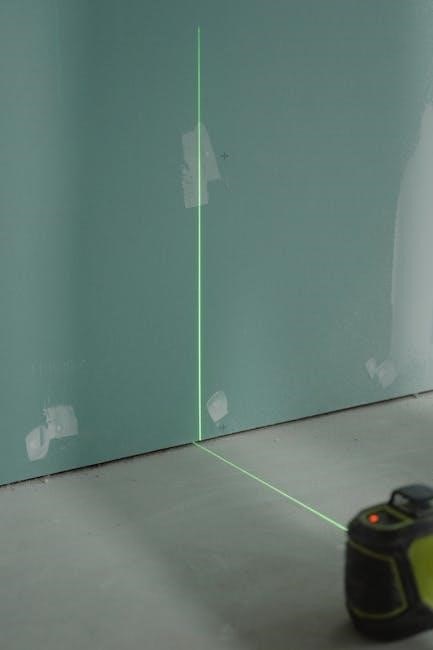Pathfinder 2e Rogue Guide
The Rogue is Pathfinder 2e’s master of stealth, deception, and precision. They excel at dealing sneak attacks, manipulating battlefield dynamics, and providing unparalleled skill versatility to any party. With a focus on Cunning and agility, Rogues are the ultimate opportunists, thriving in both combat and non-combat scenarios. This guide covers everything from class mechanics to optimal builds, ensuring you maximize your Rogue’s potential in any adventure.
The Rogue is a class of opportunity, excelling at stealth, deception, and precise strikes. They are the masters of exploiting enemy vulnerabilities, making them formidable in both combat and non-combat scenarios. Rogues rely on their Cunning and agility to outmaneuver foes, often dealing devastating sneak attacks from the shadows. Their versatility in skills and adaptability in teamwork make them invaluable to any party. Whether infiltrating, scouting, or ambushing, the Rogue’s expertise in subtlety and strategy sets them apart. This guide explores the intricacies of the Rogue class, helping players unlock their full potential through optimal builds, tactics, and roleplaying tips. From novice adventurers to seasoned veterans, the Rogue offers endless possibilities for creative and effective gameplay in Pathfinder 2e.
Key Features of the Rogue Class
The Rogue class in Pathfinder 2e is defined by its emphasis on stealth, precision, and versatility. Key features include Sneak Attack, which allows Rogues to deal bonus damage when attacking from a position of advantage. Their Expertise system grants mastery over a wide range of skills, making them adept at tasks from deception to acrobatics. Rogues also gain access to unique class feats that enhance their mobility, stealth, and combat effectiveness. Additionally, their Cunning action allows for flexible repositioning in combat, ensuring they stay one step ahead of their enemies. These features combine to create a class that excels at both dealing damage and supporting allies, making the Rogue a dynamic and essential part of any party composition in Pathfinder 2e.

Character Creation
Character creation for a Pathfinder 2e Rogue involves selecting a race, background, and assigning ability scores. Rogues prioritize Dexterity for stealth and attack rolls, with considerations for Charisma or Intelligence. Races like Halflings or Gnomes offer Dexterity bonuses, while backgrounds like Charlatan or Thief provide skill proficiencies. Assigning high Dexterity and Constitution scores is crucial, with moderate investment in Charisma for social skills. Rogues gain access to class feats enhancing mobility and combat, and they excel with light armor and weapons like short swords or daggers. Planning archetype selection and future progressions ensures a well-rounded, effective Rogue tailored to your playstyle.
Race Selection for Rogues
When creating a Pathfinder 2e Rogue, race selection plays a crucial role in optimizing your character. Races like Halfling, Gnome, and Catfolk are excellent choices due to their Dexterity bonuses, which enhance stealth and agility. Halflings, for instance, gain a +2 bonus to Dexterity and the Lucky trait, making them ideal for skill checks and sneak attacks. Gnomes also offer a +2 Dexterity bonus, coupled with their innate cleverness, which aids in problem-solving and trapmaking. Catfolk, with their +2 Dexterity and +2 Charisma, excel in social interactions and agility. Humans provide a balanced option with a +2 bonus to any ability score, offering flexibility for both stealth and combat-focused builds. Each race brings unique traits that complement the Rogue’s class features, ensuring a tailored playstyle. Choose wisely to maximize your Rogue’s potential in both combat and exploration.
Background and Initial Feat Choices
Selecting the right background and initial feat is vital for a Rogue, as these choices shape the character’s identity and capabilities. Backgrounds like “Charlatan” or “Thief” provide boosts to Dexterity and key skills such as Deception or Stealth, aligning perfectly with the Rogue’s sneaky nature. The “Scoundrel” background, for example, enhances bluffing and intimidation skills, making your Rogue a master manipulator. For feats, “Stealthy” or “Adrenaline” are excellent initial choices, boosting evasion and stamina in combat. Feats like “Fleet” can improve mobility, allowing your Rogue to outmaneuver foes effortlessly. Pairing the right background with a strategic feat ensures your Rogue excels in both combat and role-playing scenarios, creating a well-rounded and formidable character from the start.
Ability Score Prioritization
Dexterity is the Rogue’s most critical ability, as it enhances stealth, agility, and attack rolls with ranged or finesse weapons. Prioritize Dexterity to maximize your effectiveness in sneaking and dealing precision damage. Constitution is a close second, as it improves survivability—vital for a class that often operates in high-risk scenarios. Intelligence is also important, as it unlocks additional skills and enhances your ability to manipulate and deceive. Wisdom and Charisma are less crucial but can be useful depending on your build. Strength is generally a low priority unless you’re focusing on melee combat. Allocating ability scores wisely ensures your Rogue excels in both combat and skill-based challenges, making them a versatile and formidable character.

Class Features
Rogues in Pathfinder 2e possess a unique set of abilities that define their role as masters of stealth, deception, and precision. Their class features emphasize agility, cunning, and adaptability, allowing them to excel in both combat and non-combat scenarios. With abilities like Sneak Attack, Expertise, and Evasion, Rogues are versatile and deadly, capable of manipulating the battlefield and outwitting foes. These features make the Rogue a formidable and essential addition to any party, ensuring they remain a step ahead in every situation. Their class abilities are designed to enhance their lethality and utility, making them a cornerstone of strategic gameplay.
Sneak Attack Mechanics
The Sneak Attack is the Rogue’s signature feature, allowing them to deal additional damage when attacking a flat-footed or vulnerable foe. To trigger a Sneak Attack, the Rogue must have a higher level of proficiency in their attack than the target’s Reflex save. This can be achieved through precise positioning, allies’ distractions, or exploiting enemy weaknesses. The damage scales with the Rogue’s level, making it a powerful tool in both early and late game scenarios. Proper setup and coordination with the party are crucial to maximize the effectiveness of this ability, ensuring the Rogue remains a deadly and unpredictable force on the battlefield.
Expertise and Skill Versatility
Expertise is a cornerstone of the Rogue’s skill versatility, allowing them to excel in a wide range of abilities. Rogues gain more skill increases than any other class, with opportunities to raise skills to Expert, Master, and even Legendary levels. This flexibility makes them indispensable in both combat and non-combat scenarios. Whether it’s sneaking past guards, persuading NPCs, or disarming traps, the Rogue’s skill mastery ensures they can adapt to any situation. Their ability to specialize in multiple skills enables them to fill gaps in party capabilities, making them a versatile and valuable asset. This expertise, combined with their Sneak Attack damage, solidifies the Rogue’s role as a dynamic and unpredictable contributor to any adventuring party.
Rogue’s Cunning and Evasion
Rogues in Pathfinder 2e excel at evading danger and outwitting foes through their Cunning Actions and Evasion abilities. Cunning Actions allow Rogues to manipulate the battlefield, creating opportunities for sneak attacks or repositioning for optimal strikes. This feature emphasizes their agility and tactical brilliance, enabling them to stay one step ahead of enemies. Evasion further enhances their survivability, granting them expertise in reflex saves to avoid area effects and precision attacks. Together, these abilities make Rogues highly elusive and deadly, capable of both dealing devastating strikes and avoiding retaliation. As they level up, their Cunning Actions and Evasion become even more potent, solidifying their role as masters of both offense and defense in any party composition.

Trapfinding and Trapmaking
Rogues in Pathfinder 2e possess exceptional skills in both detecting and creating traps, making them invaluable for navigating dangerous environments and setting up strategic advantages. The Trapfinding ability allows Rogues to identify and disarm traps with precision, ensuring their party’s safety in dungeons and hazardous areas. Meanwhile, their Trapmaking expertise enables them to craft intricate traps, turning the battlefield into a lethal playground. This dual proficiency not only enhances their utility but also adds a layer of unpredictability to their tactics. Whether it’s bypassing deadly mechanisms or ambushing foes with cleverly laid traps, Rogues excel at controlling the environment. These abilities underscore their versatility, making them indispensable for both exploration and combat scenarios. Mastering Trapfinding and Trapmaking is essential for any Rogue aiming to outwit and outmaneuver their adversaries effectively.
![]()
Archetypes and Multiclassing
Rogues in Pathfinder 2e gain access to diverse archetypes like Thief, Trickster, and more, each offering unique twists on their core abilities. Multiclassing options with Ranger, Bard, or other classes further enhance versatility, allowing players to craft distinct characters tailored to their playstyle.
Popular Rogue Archetypes
Pathfinder 2e offers a variety of Rogue archetypes, each catering to different playstyles. The Thief archetype focuses on stealth, deception, and cunning, perfect for those who enjoy playing a classic rogue. The Trickster archetype introduces a touch of magic, granting access to illusion spells to confuse enemies and manipulate the battlefield. For swashbucklers, the Swashbuckler archetype emphasizes agility, panache, and flair, making it ideal for players who want to combine acrobatics with deadly precision. The Ruffian archetype is designed for rogues who prefer brute force, focusing on weapon specialization and raw combat prowess. Each archetype provides unique twists, allowing players to craft a Rogue that fits their preferred role in the party, whether it’s as a sneaky assassin, a charming trickster, or a deadly swordsman.
Effective Multiclass Combinations
Multiclassing a Rogue with other classes can create powerful and versatile characters. One popular combination is Rogue/Ranger, blending Sneak Attack with precision and ranged combat effectiveness. Rogue/Bard is another strong option, combining stealth with charisma-based performance and spellcasting. For a more martial focus, Rogue/Fighter allows for weapon specialization and additional combat feats. Rogue/Alchemist can create a unique blend of sneak attacks and alchemical mastery. Each multiclass combination enhances the Rogue’s core abilities while introducing new playstyles. When choosing a multiclass, consider how the secondary class complements the Rogue’s skills and Sneak Attack mechanics. Proper planning ensures a cohesive build that excels in both combat and exploration. Always balance the strengths of both classes to create a well-rounded character.

Feats for Rogues
Rogues rely on feats to enhance their abilities, with options for combat, stealth, and skill mastery; Feats allow customization, making each Rogue unique and adaptable in any scenario.
Key Feats for Rogues
Key feats for Rogues in Pathfinder 2e are essential for maximizing their effectiveness. Sneak Attack is a cornerstone, allowing Rogues to deal extra damage when attacking from the shadows. Expertise enhances their proficiency in skills, making them versatile in both combat and exploration. Cunning Action improves mobility and reaction capabilities, while Evasion grants superior reflexes to avoid attacks. Additionally, Trapfinding and Trapmaking feats enable Rogues to navigate and create complex traps, adding depth to their utility. Selecting the right combination ensures a Rogue excels in their role as a stealthy, skill-oriented character, capable of adapting to any situation the game presents.
Niche and Situational Feats
Niche and situational feats for Rogues in Pathfinder 2e offer unique utility tailored to specific playstyles or scenarios. Feats like Underhanded or Twisted Trickster provide creative ways to manipulate enemies or the battlefield. Deceptive Strike enhances stealth and misdirection, while Charming Feint blends social manipulation with combat prowess. Lightning Reflexes improves initiative, making Rogues more dangerous at the start of combat. Stealthy Move and Expert Misdirection amplify a Rogue’s ability to remain elusive. These feats may not be essential for every build but can shine in specific situations, offering versatility and adaptability. They allow Rogues to specialize further, making them even more unpredictable and formidable in both combat and exploration.

Skill Progression and Optimization
Rogues gain Skill Increases at every level after 2nd, allowing them to become Experts, Masters, or Legends in their chosen skills, enhancing versatility and effectiveness.
Skill Increases and Expertise
Rogues in Pathfinder 2e receive Skill Increases at every level after 2nd, providing opportunities to enhance their proficiencies. This system allows Rogues to become Experts, Masters, or even Legends in specific skills, significantly boosting their effectiveness. Expertise, a key feature, grants Rogues access to specialized skills, making them invaluable in both combat and non-combat situations. By strategically allocating Skill Increases, players can craft a Rogue that excels in stealth, deception, or other areas, ensuring they remain versatile and formidable. This flexibility enables Rogues to adapt to various challenges, making them a cornerstone of any successful party.
Building a Skill Monkey Rogue
Constructing a Skill Monkey Rogue in Pathfinder 2e involves maximizing skill proficiencies and versatility. Rogues naturally excel in this role due to their frequent Skill Increases and Expertise feature. By focusing on key skills like Stealth, Deception, and Diplomacy, you create a character adept at navigating complex social dynamics and avoiding detection. Allocating ability scores to Dexterity and Intelligence enhances these capabilities, while selecting feats like Versatile Heritages or Skill Versatility further expands your skill set. Multiclassing with classes like Bard or Investigator can add even more skills, making your Rogue a jack-of-all-trades. With careful planning, your Rogue becomes an indispensable asset, capable of solving problems through ingenuity and finesse rather than brute force, ensuring they stand out in any party composition.

Equipment and Gear
Rogues rely on agility and stealth-enhancing gear. Prioritize weapons like daggers or shortbows for sneak attacks. Light armor and accessories that boost Dexterity or Stealth skills are ideal, ensuring versatility in both combat and exploration scenarios.
Weapons and Armor for Rogues

Rogues thrive with weapons that emphasize precision and agility, such as daggers, shortbows, and rapiers. These weapons allow for deadly sneak attacks and flexibility in combat. Light armor is ideal, as it maintains mobility while offering protection. Leather or studded leather armor is often preferred, providing a balance between defense and stealth. Accessories like gloves of archery or cloaks of elvenkind can enhance prowess without hindering agility. Weapons with versatile traits, such as finesse or range, are particularly advantageous. Rogues should also consider weapons that complement their fighting style, whether it’s close-quarters melee or ranged attacks from the shadows. The right gear ensures they remain nimble, lethal, and adaptable in any situation.
Accessories and Consumables
Accessories and consumables are crucial for optimizing a Rogue’s effectiveness. Items like gloves of archery enhance accuracy, while cloaks of elvenkind improve stealth capabilities. Boots of striding and springing increase mobility, allowing Rogues to outmaneuver foes. Consumables such as healing potions, elixirs of hiding, and smokesticks can be game-changers in tight situations. Alchemist’s fire and tanglefoot bags provide versatile tools for controlling the battlefield. Rogues also benefit from tools like thieves’ tools and burglar’s packs, which aid in skill checks and mischief. Trinkets like a belt of giant strength or amulet of natural armor can bolster survivability without sacrificing agility. These items, when used strategically, amplify a Rogue’s cunning and lethality, making them indispensable to any party.

Tactics and Combat Strategies
Rogues excel in ambushes and positioning, using skills like Stealth and Deception to outmaneuver foes. They thrive in team dynamics, setting up sneak attacks and maintaining strategic initiative.
Setting Up Sneak Attacks
Setting up sneak attacks is a cornerstone of the Rogue’s combat effectiveness in Pathfinder 2e. To maximize damage, a Rogue must position themselves to attack from an enemy’s blind spot or when the foe is distracted. This often requires careful positioning, using allies to create flanking opportunities or drawing aggro away from vulnerable targets. The Rogue’s ability to perform a sneak attack hinges on their proficiency in Stealth or Deception, allowing them to remain undetected or catch enemies off guard. Timing is critical, as initiating combat with a surprise round or striking after an ally has already engaged can ensure the enemy is flat-footed. Additionally, using abilities like Cunning Action to reposition or create openings can significantly enhance sneak attack setups. By manipulating battlefield dynamics and leveraging teamwork, a Rogue can consistently deliver devastating sneak attacks, making them a formidable presence in any encounter.
Ambush Tactics and Team Synergy
Ambush tactics are where the Rogue truly shines, utilizing their skills to outmaneuver and overpower foes through clever positioning and coordination with allies. By setting up ambushes, Rogues can initiate combat on their terms, catching enemies off guard and dealing maximum damage with sneak attacks. Team synergy is crucial, as the Rogue relies on allies to create opportunities for flanking or isolating targets. Using abilities like Cunning Action to reposition or Expertise to enhance skills ensures the Rogue can adapt to dynamic combat situations. Effective communication and timing with the party allow the Rogue to execute devastating ambushes, making them a key strategist and damage dealer in any adventuring group. This teamwork-centric approach ensures the Rogue remains a vital and influential force on the battlefield.